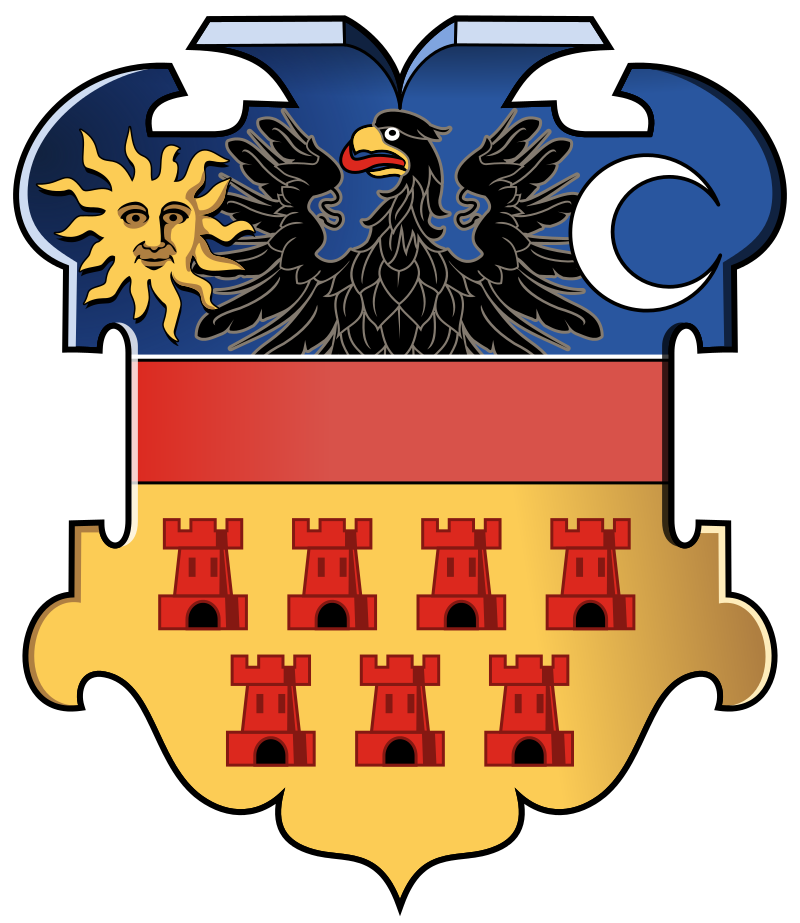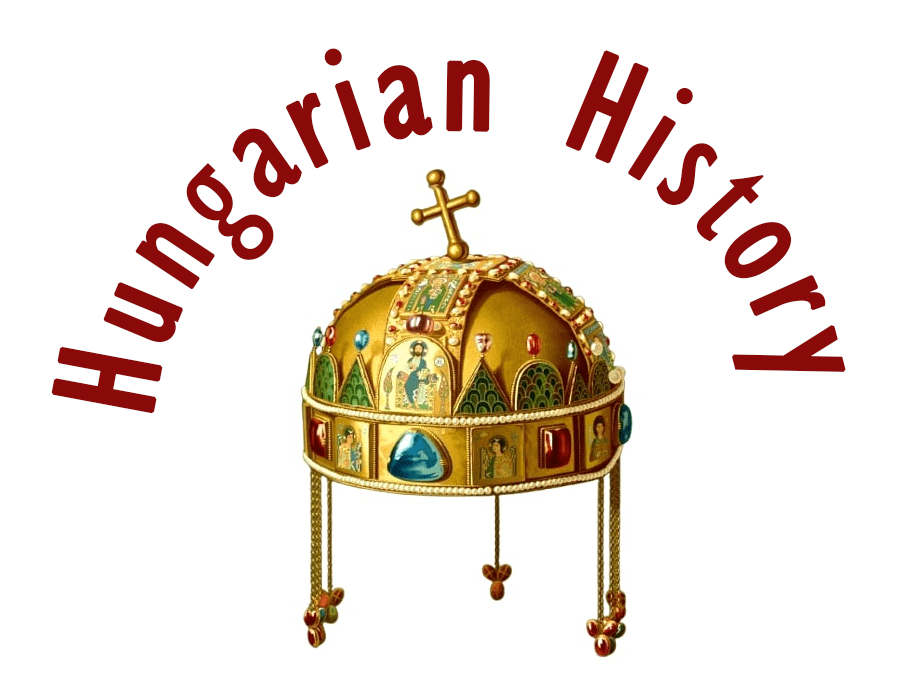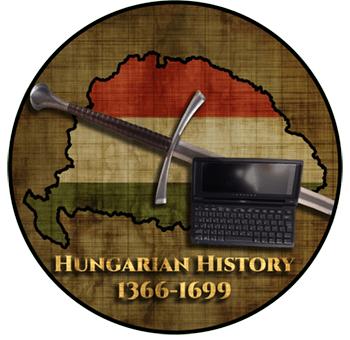
Höltövény (Hălchiu, Heldsdorf ) can be found in Transylvania, Romania, but the Höltvövény castle and the fortified church were built in Hungary. They are in Krízba (Crizbav), a village about 30 km north of the city of Brassó (Kronstadt, Brasov), on the eastern edge of the Persányi Mountains.
Location on my Google Map: https://tinyurl.com/2s4c7y8u

In the north-western outskirts of the village, on the cliff top of the 1002 m high Castle Hill, are the ruins of the castle of Höltövény. It is connected to the Bálványos Peak on the west side by a rocky ridge, which was once cut through by a 3-4 metres deep ditch. On the southeastern corner of Castle Hill stands a basement wall remnant about 1 metre wide. On the side opposite the entrance is the ruin of a large tower.

The tower was intact at the end of the 17th century, but in 1799 its eastern side and part of the southern side collapsed. Today, only the east and west sides stand 5-6 metres high, but originally they may have been considerably higher. Its original foundations are approximately 15 x 10 metres.

It is probably one of the five castles built by the German crusaders summoned to the Barcaság region by King András II in 1211. Unfortunately, there are no documentary records of the founding of the village of Höltövény. According to oral tradition, it could have been founded between the expulsion of the crusaders in 1225 and the Mongol invasion of 1241.

It was founded by around 10 families led by the knight Fulkun (known as “Haldeboatschi”). King András II entrusted him with the defense of Höltövény Castle. At that time, the castle was directly connected to the community via the so-called “Burgweg” (Krebsbach-Neudorf-Heldsdorf).

The four Mongol invasions (1241, 1278, 1285, and 1335) are said to have devastated the region of Barcaság (Burzenland) to such an extent that some places disappeared completely. It was first mentioned in writing in 1335 as ‘castrum Heltheun’, when Nicholas Wass and his kinsmen served the king here.

In 1344, a charter of King Lajos I mentioned Tamás, son of Veres Péter, as the castellan of Höltövény. 1377: The village of Höltövény was mentioned in a royal privilege granting legal advantages to Brassó / Kronstadt and the Barcaság / Burzenland region. The king declared that this village and the other twelve free communities of the Barcaság / Burzenland region, which had belonged to the town of Brassó / Kronstadt since time immemorial, should continue to belong to it. This confirmed a judicial and administrative entity.

1378: An agreement was reached between the towns of Höltövény / Heldsdorf and Marienburg. As a result, the residents of Höltövény owned a lot of farmland in the Marienburg area, probably because of the small size of their own land. This led to disputes and disagreements between the residents of the two towns. 1417: King Sigismund once again warned the people of Heldsdorf to pay the Marienburgers rent for the leased fields.

1421: King Sigismund also remitted Martin’s tax for the current year to the heroic communities, as they had suffered great damage from the Turkish invasion. The following year, they were exempted from paying Martin’s tax for ten years. 1427: On May 11, King Sigismund and his entourage stayed in Marienburg and once again ordered the residents of Höltövény / Heldsdorf to pay the ground rent from their fields located on the Hattert of Marienburg to Marienburg.

In 1432 and 1438, the Turks invaded the region of Barcaság / Burzenland once again. The extent of the suffering endured by the inhabitants of Höltövény was evidenced by the cry for help that can still be read today in Latin on the old bell from 1434, the oldest in Barcaság / Burzenland:
“O King of Honor, O Jesus Christ, have mercy on us, King of Israel, come with Your peace. In the year of our Lord 1434.”

In 1458, Kazimiri Masa Mihály, deputy Comes of the Székelys, was appointed castellan of Höltövény. The Saxon settlement was already a market town in the 15th century. In 1459, the Székely and Temes Comes, Lábattani János, gave instructions to the castellans of Höltövény and other castles. At that time, it was a royal castle, and King Matthias donated 100 gold forints from the property of the people of Brassó to feed the castle and other nearby fortresses.

It was mentioned in a charter of 1462 and last mentioned in 1477, when it was still in the hands of the royal treasury (fiscus). It was destroyed at an unknown date. 1510: On the occasion of the first census in the region of Barcaság / Burzenland, Höltövény was mentioned as having 100 householders, 4 widows, 4 poor people, 4 “deserted” houses, one miller, one bailiff, one schoolmaster, one bell ringer, five shepherds, and one church house.

1523: Hans Felmer, mayor of Höltövény, drove Master Valentin Druden to the city of Buda with his four-horse carriage. The carters from Höltövény made transport trips for merchants from Brassó to Vienna, Prague, Leipzig, Kraków, and northern Italy. Eleven to sixteen horses were harnessed to large covered wagons, and caravans were formed to better survive the dangers of such a journey.

Its fortified church was built in the 14th century, and was one of the most fortified of its kind: it is surrounded by a rampart and fortified with towers. It was built in 1452, and it was one of the strongest fortifications in the Barcaság region. 1522-1526. The learned pleban, Dr. Johannes Schirmer, was pastor in Höltövény. The late Gothic winged altar in the church dates from this period, or from 1527, and is the most beautiful in the Barcaság.

The oldest register of names of the inhabitants of Höltövény dates from 1526. Eighty were full taxpayers and 23 were half taxpayers. Ten houses were uninhabited, so no tax could be levied on them. Two shepherds, a miller, a beggar, and the horse keeper were mentioned as tax-exempt residents. With its population, Höltövény was the ninth largest of the Saxon communities in the region of the Barcaság / Burzenland at the beginning of the 16th century and contributed one-twentieth of the total tax revenue of this region.

On September 24, 1536, Höltövény had to pay a fine of 20 florins for the killing of “Volachii.” These were probably people who had been killed while working as cattle herders, for whom the community, as their employer, had to pay compensation to their relatives. This invoice is the first written mention of Vlachs (Romanians) in Höltövény.

In August 1538, the troops of Transylvanian Voivode Majláth István committed “unbearable acts of violence” in the community, killing a shepherd and wounding several soldiers who had attempted to steal the community’s herd. The local mayor was “treated” with sword blows. When the people of Brassó complained about this to King Szapolyai János, the voivode threatened to hang the Brassó city judge. Ultimately, the incident was resolved through a court hearing, and the guilty parties were punished.

On September 10, 1540, when the king had a son, the people of Höltövény also received a guilder to celebrate the joyful event. In May 1541, a total of 79 taxpayers were counted in Höltövény (Heldsdorf). Hann Rysze Casper was at the head of the administration. The carters of Höltövény were the first to bring Lutheran writings to the Barcaság / Burzenland region. In 1542, Höltövény was one of the first communities in the region to convert to Protestantism. The first pastor to hold Protestant services was Valentinus Wingolf (Weingelt).

In March 1550, 137 taxpayers were registered in “Hölczdorff,” placing Höltövény / Heldsdorf in eighth place among the communities in the Barcaság / Burzenland region. The municipal accounts of Brassó from 1541 to 1550 document the increasing tax revenue of the community of Höltövény / Heldsdorf.

In 1599, the Romanian Voivode Michael’s troops invaded the Barcaság / Burzenland region with over 25,000 men. On October 20, they reached Höltövény, burned down the town, and attacked the fortified church six times in vain, where the population had taken refuge. After a month, however, they reappeared so suddenly and unexpectedly that they were able to take the fortress at the first assault. The horses driven into the outer bailey and the silver apostles from the altar fell prey to the enemy. On the back of the altar, an indistinct chalk inscription could be seen: “Mihaly Vajda on the day of Simonis and Judae (October 28) 1599,” which referred to this event. A year later, the troops of Michael burned down the whole place.

From 1603 to 1604, famine and animal diseases ravaged the town, and many families subsisted on roots. The lack of draft animals forced people to pull the plow themselves; eight of them harnessed themselves to a plow. On July 9, 1611, the warriors of Erban, who had been summoned by the town judge Michael Weiß, defeated Prince Báthori Gábor of Transylvania. In this conflict, Höltövény sided with Báthori. On July 11, 1611, Erban’s warriors burned down Höltövény. On August 22, 1611, a huge swarm of locusts came from Wallachia through the Tömös Pass and settled near the settlement. The next day, they were chased away through the forest. On September 21, 1611, the Székelys (“Zeckel”) stole the entire cattle herd from the inhabitants of Höltövény.

In 1612, numerous soldiers marched through the region, causing great damage in the town of Höltövény. In the battle of Marienburg on October 16, 1612, the people of Brassó, led by Michael Weiß, suffered defeat at the hands of Báthori. Michael Weiß was killed in this battle. In 1613, the Prince of Transylvania, Báthori Gábor, was compelled to make peace with Brassó. On October 27, 1613, he was assassinated in the streets of Nagyvárad (Oradea) by his own people. Under his successor, Bethlen Gábor, peace returned to Saxon lands and the unity of the Transylvanian Saxons was restored.

In 1664 and 1688, Höltövény was destroyed by fire. In 1683, there were reports of a final incursion by the Crimean Tatars. They set up camp between Zidany and Höltövény and stole the livestock they had rounded up from the fields and forests.

In 1690/1691, the region was once again a theater of war: Count Thököly defeated the Austrian troops with Turkish help. He burned down Höltövény and committed “other atrocities.” In 1694, Höltövény burned down again. On January 14, 1704, the Kuruc soldiers (rebellious Székelys) invaded the Barcaság / Burzenland for the first time and stole 400 cattle from the villages of Zeidern and Höltövény.

In April 1705, the Imperial forces – who were allies of the Saxons – entered Höltövény / Heldsdorf and, while the peasants were working in the fields, looted the houses and drove away the livestock. Faced with this reality, the peasants felt more disgust towards the Imperial troops than fear of the Kuruc troops. The war continued in the year 1706.

In 1707, a fierce clash occurred near Höltövény / Heldsdorf between the Brassó Free Company and 400 – another chronicle reports 900 – Kuruc, resulting in 40 Kuruc being killed and the rest pursued as far as Marienburg. In August 1708, the Kuruc abducted the judge of Marienburg and the village head (Hann) of Heldsdorf, who were eventually freed by their pursuers near Katzendorf. In 1711, the Kuruc War ended. The Hungarian nobles and the Habsburgs signed the Peace Treaty of Szatmár – Austrian rule was introduced in Transylvania.

During the Revolution of 1848, National Guards were established in Transylvania. In Höltövény / Heldsdorf, all youths and men aged 16 to 50 were required to join the Civic Guard. The Civic Guard also became involved in fights with the revolutionary Székelys. The people of Höltövény / Heldsdorf suffered from billeting and looting. The flag of Heldsdorf originates from this period.

In 1910, the population consisted of 2,817 inhabitants, with 2,068 being German, 518 Romanian, and 231 Hungarian. 1914-1918: The First World War. Between 1914 and 1918, nearly 500 men from Höltövény served in the military; women now had to take on the tasks and duties of the men as well. At the end of August, the Romanian army, without a prior declaration of war, invaded Transylvania over the Carpathian Mountains. The Saxon population fled, mostly via Nußbach and the Geisterwald, to the Altland and as far as the Banat. After the Battle of Brassó from October 7-9, 1916, the Romanian troops were forced to withdraw, and the stream of refugees began to return home. In this war, the German population of Heldsdorf suffered 73 fatalities. A war memorial was erected for them on the eastern side of the Protestant church in 1928. The Romanian inhabitants recorded 12 dead and missing.

On December 1, 1918, the Great National Assembly of the Transylvanian Romanians convened in Karlsburg and decided on the union of Transylvania with Romania. On January 8, 1919, the Saxon National Assembly convened in Medgyes / Mediasch and declared itself in favor of the union with Romania.

In the years 1934-1935, the new Romanian school was built by the political municipality; over 80% of the required funds came from the Saxon village assets. 1939-1945: During the Second World War, over 600 able-bodied Saxon men were conscripted, the majority of whom served in German units. After this war, the Saxons of Heldsdorf recorded 232 casualties.

On August 25, 1944, Romania declared war on its former ally, Germany. All Saxons serving in German units were no longer allowed to return to their homeland. Many scattered German soldiers were hidden in Höltövény / Heldsdorf by the Saxon population. At times, there were over 100. The last of them left Heldsdorf in 1946. On September 9, 1944, the Red Army marched into Heldsdorf. The troops consisted mainly of soldiers of Asian origin.

On January 14, 1945, 306 women and men from Höltövény / Heldsdorf were deported to the Soviet Union. During the deportation, 47 people (7 women and 40 men) died. 1945/1946: Romanian settlers were brought to Heldsdorf. They came mainly from the areas around Argeș, Törzburg, and Schnakendorf; others were refugees from Bukovina. The leaders of this action were Lazar Taranu and Ion Podea. Although the decree on the agrarian reform of March 23, 1945, provided for the expropriation of land holdings of over 50 hectares, almost all Saxons in Heldsdorf had their land, farms, and even movable property expropriated and allocated to the colonists. The Romanians of Heldsdorf selected the best farmsteads for themselves. Through these measures, the Saxons were deprived of their livelihood. The struggle for survival began.

In December 1949, the majority of those deported to Russia returned home. 1950: The collective farm was established. On July 30, 1950, Brassó (Brasov, Kronstadt) received the name “Stalinstadt”. May 8, 1952 – Forced evacuation. 22 families (90 persons) had to leave Heldsdorf within 2 days. 1957: The first new houses are constructed by the Romanian colonists in front of the Kleine Hintergasse. The beginning of the demise of barns in Höltövény / Heldsdorf. Demolished barns and farm buildings were sold off as construction materials to the colonists.

1990: Mass emigration of the Saxons from Heldsdorf. September 1990: The German school ceased teaching operations in Höltövény / Heldsdorf. August 1993: Pastor Herwig Klein left Höltövény / Heldsdorf; the pastorate remained vacant.
The Heldsdorf Hometown Community was founded in Germany in 1952 by Dr. HANS MOOSER. Annual meetings have been held in Dinkelsbühl since 1953. Since 1955, the regular meeting place has been the “Der Rote Hahn” inn. The Hometown Community has largely achieved the goals set at its founding. At that time, the overwhelming majority of Heldsdorfers lived in Heldsdorf and only a small part lived in the West. Today, the ratio is reversed, and thus the tasks and objectives of the Hometown Community have also changed.
The Heldsdorf Hometown Community today strives to meet these changed requirements.
Source: https://web.archive.org/web/20060613203055/http://www.heldsdorf.de/Chronik/chronik.html

Dear Readers, I can only make this content available through small donations or by selling my books or T-shirts.
Please, support me with a coffee here: https://www.buymeacoffee.com/duhoxoxa
You can check out my books on Amazon or Draft2Digital. They are available in hardcover, paperback, or ebook:
https://www.amazon.com/dp/198020490X or at https://books2read.com/b/boYd81

My work can also be followed and supported on Patreon: Become a Patron!http://Become a Patron!
Become a Patron! Donations can be sent by PayPal, too: https://tinyurl.com/yknsvbk7


https://hungarianottomanwars.myspreadshop.com/all
Subscribe to my newsletter here: https://tinyurl.com/4jdjbfkn
Here are a few pictures of the castle and the fortified church og Höltövény / Heldsdorf:








































